
It's far from uncomfortable though, and like the 4000, what Dremel has done is to increase the number of ventilation holes, while reducing the chance of you blocking them while you use it. This will inevitably mean it will run a little cooler and live longer as a result.
The power switch is far more recessed than with the 300 - a good thing as it's all too easy to knock the latter and set your Dremel eating into your trousers. The switch is stiffer too to bring that point home, but has the same granularity of nine or so individual speed settings. We still prefer the wheel arrangement of the 4000 though.
Something that should please many hard-core users is the introduction of sealed bearings with the 3000 series. While most parts are available for spares, such as replacement motor brushes, the fact the new bearings are sealed should mean they last much longer without getting clogged full of dust over time.
Testing
The first thing we noticed about the 3000 is that it's so much quieter than the 300. It's less grating on your ears, especially at full speed which is a welcome improvement. Handling wise, it weighs exactly the same as the 300, which already had a nice feel to it, although due to the less elaborate finger moulds at the tip as we mentioned earlier, it's not as comfortable to use for detailed work.
The additional 5W in power is welcome but didn't really translate into a noticeable improvement. What we loved though, was the EZ Twist nose cap. Tightening the collet isn't usually much of an issue, but releasing it after a hefty, torque-filled session with a cutting disc often required the use of a spanner or pliers. Not any more. There was no sign of the wrench in the collar slipping either - hopefully this will remain the case throughout it's life.
The speed switch is certainly more secure but it can be quite stiff to use, especially if you're trying to latch onto a specific mid-range speed. So much force is required that you often skip right passed your desired speed; the Dremel 4000 definitely has the edge here with its gliding wheel. After prolonged use, the 3000 felt noticeably cooler than the 300, most likely due to the improved ventilation but a lot will depend on how you you hold it.
Conclusion
The Dremel 3000 is better than the 300 in many ways, but the areas where we initially felt were maybe backwards steps - the finger grips and ability to carry out detailed work - are included to improve the design in other areas. With the 3000-1/25 accessory set coming with the flexible shaft anyway, we feel this is a worthy compromise - with the addition of sealed bearings, the improved cooling should mean the 3000 lasts much longer than its predecessor. It's otherwise comfortable to use with all the usual fittings, although having been spoilt with the 4000, if we could change anything about the 3000, we'd like a glide wheel instead of a stiff switch for speed adjustment.
Price-wise it's a no-brainer though. The 3000 costs just a little more than 300, in both its bare bones zip case kit, and hard case alternative with the additional accessories and flexible shaft. We have to commend Dremel on not hiking the price for a new product, but then the 4000 provides the necessary upper limit, offering more power and features such as enhanced feedback and torque and wider speed range. The 3000 isn't revolutionary, but it's a definite improvement over the 300 that should mean it's easier to use and lasts longer too.
Click to enlarge
The power switch is far more recessed than with the 300 - a good thing as it's all too easy to knock the latter and set your Dremel eating into your trousers. The switch is stiffer too to bring that point home, but has the same granularity of nine or so individual speed settings. We still prefer the wheel arrangement of the 4000 though.
Click to enlarge
Something that should please many hard-core users is the introduction of sealed bearings with the 3000 series. While most parts are available for spares, such as replacement motor brushes, the fact the new bearings are sealed should mean they last much longer without getting clogged full of dust over time.
Click to enlarge
Testing
The first thing we noticed about the 3000 is that it's so much quieter than the 300. It's less grating on your ears, especially at full speed which is a welcome improvement. Handling wise, it weighs exactly the same as the 300, which already had a nice feel to it, although due to the less elaborate finger moulds at the tip as we mentioned earlier, it's not as comfortable to use for detailed work.
The additional 5W in power is welcome but didn't really translate into a noticeable improvement. What we loved though, was the EZ Twist nose cap. Tightening the collet isn't usually much of an issue, but releasing it after a hefty, torque-filled session with a cutting disc often required the use of a spanner or pliers. Not any more. There was no sign of the wrench in the collar slipping either - hopefully this will remain the case throughout it's life.
The speed switch is certainly more secure but it can be quite stiff to use, especially if you're trying to latch onto a specific mid-range speed. So much force is required that you often skip right passed your desired speed; the Dremel 4000 definitely has the edge here with its gliding wheel. After prolonged use, the 3000 felt noticeably cooler than the 300, most likely due to the improved ventilation but a lot will depend on how you you hold it.
Conclusion
The Dremel 3000 is better than the 300 in many ways, but the areas where we initially felt were maybe backwards steps - the finger grips and ability to carry out detailed work - are included to improve the design in other areas. With the 3000-1/25 accessory set coming with the flexible shaft anyway, we feel this is a worthy compromise - with the addition of sealed bearings, the improved cooling should mean the 3000 lasts much longer than its predecessor. It's otherwise comfortable to use with all the usual fittings, although having been spoilt with the 4000, if we could change anything about the 3000, we'd like a glide wheel instead of a stiff switch for speed adjustment.
Price-wise it's a no-brainer though. The 3000 costs just a little more than 300, in both its bare bones zip case kit, and hard case alternative with the additional accessories and flexible shaft. We have to commend Dremel on not hiking the price for a new product, but then the 4000 provides the necessary upper limit, offering more power and features such as enhanced feedback and torque and wider speed range. The 3000 isn't revolutionary, but it's a definite improvement over the 300 that should mean it's easier to use and lasts longer too.

-
Value26 / 30
-
Design37 / 40
-
Features25 / 30


MSI MPG Velox 100R Chassis Review
October 14 2021 | 15:04

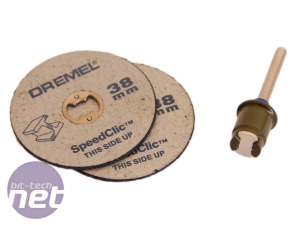

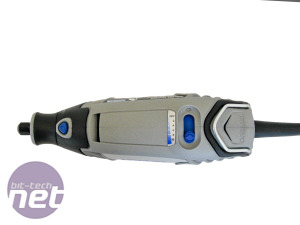
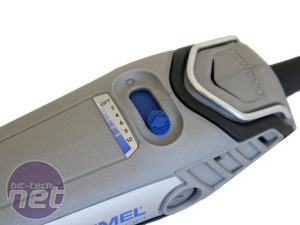
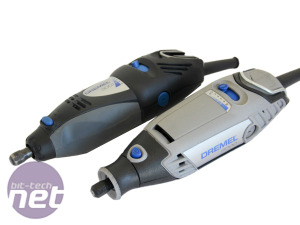
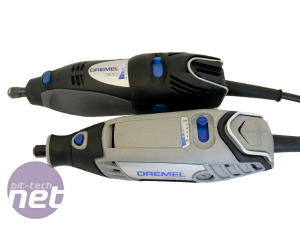







Want to comment? Please log in.